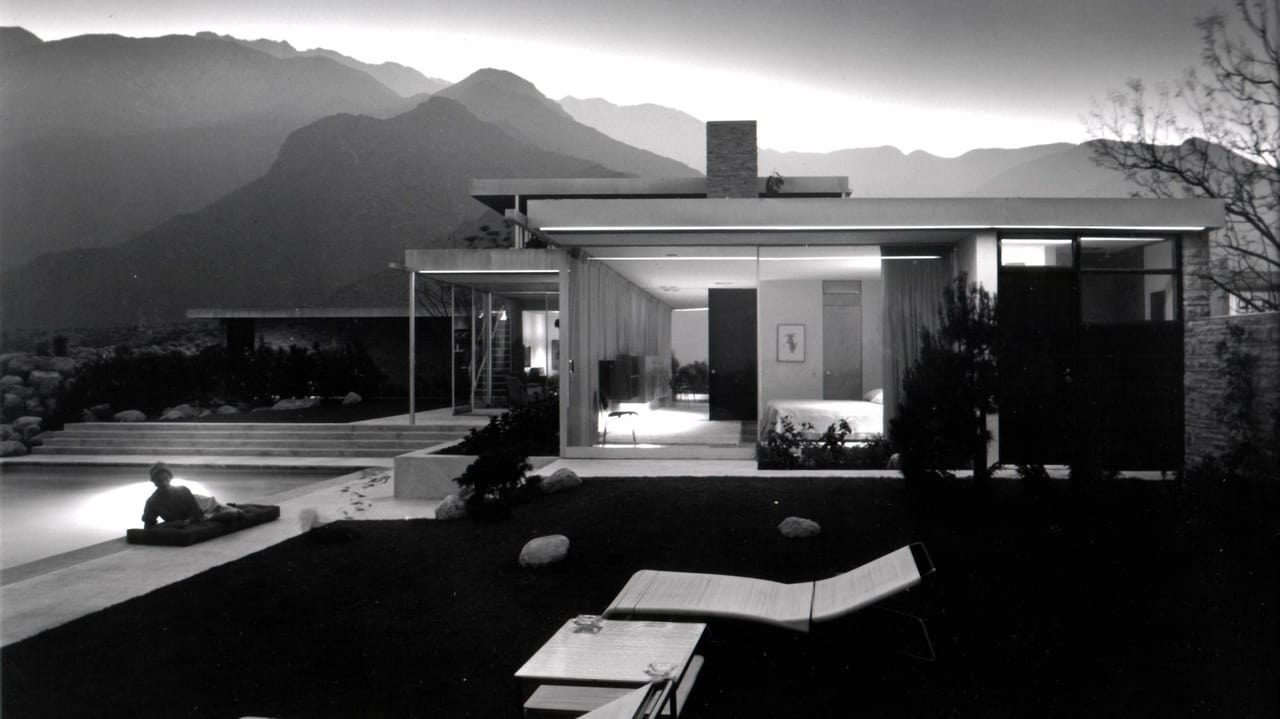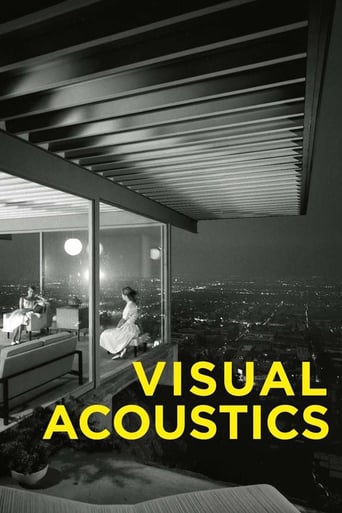Dubl_A
This is one of those documentaries that is just about impossible to screw up. Julius Shulman was such a monumental figure in both 20th century photography and modern architecture (not to mention an affable and entertaining subject) that a documentarian need only to remember to take the lens cap off - the movie makes itself.That being said, this film at times takes a on a tone that I felt undermined the content. Aside from a few exceptions, the "wacky" animations and motion graphics which worked in films like 'The Kid Stays in the Picture' felt very out of place here. Furthermore, the production standards for much of the interview footage was appallingly low - especially considering it is a movie ABOUT a photographer.All of this aside, I do recommend seeing this if you are a fan of Shulman's work or mid century modern architecture. Maybe I'm being too hard on this film, but after waiting for months to see this in the theater, I left a bit disappointed. Considering so much of this film concerns itself with the fundamentals of modernism where "form follows function", I really feel that the style of someone like Gary Hustwit ('Helvetica' & 'Objectified') would have been a lot more suited to this production.
moberhofer
A must see, if you care about Modern Architecture and the most seminal and influential architects of the 20th Century.Photographed by a Master photographer with photographs that are even better than the great buildings they portray are featured throughout together with Julius Shulman's observations on life, architecture and photography as he takes you on a walk through his garden and the his past as well. He is widely recognized as the best architectural photographer of all time. His photograph of the cliff hanging Stahl House , Case Study #22 made it the most famous house and architectural photograph of all time! California , Los Angeles and Palm Springs were at the forefront of a new wave of Modern Architecture that combined inside and outside that had not been done before. It benefited from the California climate and melded the buildings into their sites using topography,light and view.It featured groundbreaking new ideas of "form following function" and even "ornament is crime". It enabled a new era and lifestyle to emerge and become iconic. Wonderfully brought to the screen and fully realized and crafted with vintage footage , interviews and photographs revealed here for the first time for new audiences and old fans.It's really a "Homage" to Julius Shulman , Modern Architecture and Southern California in its Golden Age.
tedg
Here's more about the challenge of architecture and cinema. Its not trivial, the problem of what does space mean in films? What narrative role does it play? What vocabulary is relevant?This film is rather mundane in most ways. It is a biography of a fellow of influence. He's quirky, but always in a desirable way (so far as the entertained audience). His profession — why he is important — allows for all sorts of images, from interviews, filming of him now and in the past, silly animations, and shots of the buildings he has photographed. As a biography and film, it is something of a yawn, as ordinary as they claim the fellow to be extraordinary. But it gives an excuse to think deeply about architecture and image, about motion, space and narrative.The context: starting in the 30s in Europe a general philosophical trend toward purity was reflected in schools of architecture. The main notion there was the use of modern materials to escape traditional constraints in form. This would allow a designer to use forms that were pure, natural, deep. Differences among groups were a matter of what path was best in finding purity, nature and depth. It was a good time. Out of that general influence stepped some designers in Los Angeles who appropriated some principles of purity from one of these schools. Planes, power, open glass, but in an architecturally superficial way. What they did instead was separate these notions of European architecture from the narrative of real explorations into being and self into a narrative of wealth and a privileged lifestyle.Architectural effects were neutered in the service of selling this "California Lifestyle" and reduced to powerful planes that pushed past invisible glass walls. Purity became "a good view." Rethinking of space became simple openness. What began as a matter of meaning, turned into a matter of advertising a narrative, something of an artificial one. Sure, some of the effects in these buildings were competent, but they were largely in the same business as the television executives who bought the houses. It was a bad time.Now, along comes a talented photographer, or rather one who would become talented and who would make this architecture famous. Why is illustrative.His talent is the ability to make a narrative out of certain views of these accommodating structures. Or, if you please, he finds the narrative. This film is wonderful in that when you actually see him work (he still does) you can see him aligning forms so that from front to back — always in a one point perspective — there is an articulated flow that indicates energy. Many times, he uses that energy to indicate a connection with the environment. It is a masterly art, a good thing. I did not appreciate the influence this fellow has had on cinematographers, and how they handle architecture. You need the bold planes and deep spaces of "modern" architecture for this relatively simple technique, but you can clearly see it in, say Sasha Vierny, or XX.As to the value of the film as a film, it is far less competent than the things is speaks of, and draws on witnesses who are not worth listening to. I suppose the filmmakers will be happy if you like this charming old coot and know that somehow he was important. It succeeds at that.Ted's Evaluation -- 3 of 3: Worth watching.

